
The Salt Lake Temple is a temple of the Church of Jesus Christ of Latter-day Saints on Temple Square in Salt Lake City, Utah, United States. At 253,015 square feet (23,505.9 m2), it is the largest Latter-day Saint temple by floor area. Dedicated in 1893, it is the sixth temple completed by the church, requiring 40 years to complete, and the fourth temple built since the Mormon exodus from Nauvoo, Illinois, in 1846. The temple was closed in December 2019 for a general remodelling and seismic renovations, which were initially estimated to take approximately four years. Subsequent updates extended the estimated completion to 2026, for a total renovation timeline lasting an anticipated six or seven years.

Temple Square is a 10-acre (4.0 ha) complex, owned by the Church of Jesus Christ of Latter-day Saints, in the center of Salt Lake City, Utah. The usage of the name has gradually changed to include several other church facilities that are immediately adjacent to Temple Square. Contained within Temple Square are the Salt Lake Temple, Salt Lake Tabernacle, Salt Lake Assembly Hall, the Seagull Monument, and two visitors' centers. The square was designated a National Historic Landmark District in 1964, recognizing the Mormon achievement in the settlement of Utah.
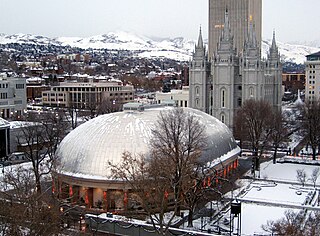
The Salt Lake Tabernacle, also known as the Mormon Tabernacle, is located on Temple Square in Salt Lake City, in the U.S. state of Utah. The Tabernacle was built from 1863 to 1875 to house meetings for the Church of Jesus Christ of Latter-day Saints. It was the location of the church's semi-annual general conference until the meeting was moved to the new and larger LDS Conference Center in 2000. Now a historic building on Temple Square, the Salt Lake Tabernacle is still used for overflow crowds during general conference. It is renowned for its remarkable acoustics and iconic pipe organ. The Tabernacle Choir has performed there for over 100 years.

The Beehive House was one of the official residences of Brigham Young, the second President of the Church of Jesus Christ of Latter-day Saints, in Salt Lake City, Utah, United States. The Beehive House gets its name from the beehive sculpture atop the house.

The Joseph Smith Memorial Building, originally called the Hotel Utah, is a social center located on the corner of Main Street and South Temple in Salt Lake City. It is named in honor of Joseph Smith, the founder of the Latter Day Saint movement. It houses several restaurants and also functions as a venue for events. Several levels of the building also serve as administrative offices for the Church of Jesus Christ of Latter-day Saints departments such as FamilySearch. On January 3, 1978, it was added to the National Register of Historic Places as the Hotel Utah.
In temples of the Church of Jesus Christ of Latter-day Saints, an ordinance room is a room where the ceremony known as the Endowment is administered, as well as other ordinances such as Sealings. Some temples perform a progressive-style ordinance where patrons move from room to room, each room representing a progression of mankind: the Creation room, representing the Genesis creation story; the Garden room represents the Garden of Eden where Adam and Eve lived prior to the fall of man; the World room, where Adam and Eve lived after the fall; the Terrestrial room; and the Celestial room representing the Celestial Kingdom of God, or more commonly, heaven. There is also an additional ordinance room, the Sealing room, and at least one temple has a Holy of Holies. These two rooms are reserved for the administration of ordinances beyond the Endowment. The Holy of Holies is representative of that talked about when the temple is discussed in the bible.
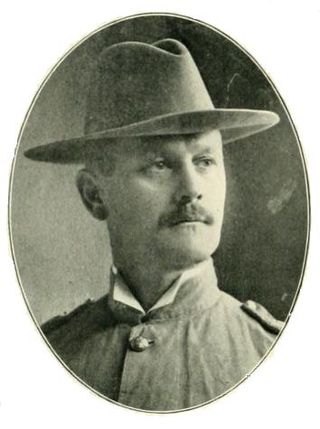
Richard Whitehead Young was a U.S. Army brigadier general and an associate justice of the Supreme Court of the Philippines during the time that the Philippines was a U.S. Territory.

The St. George Utah Temple, formerly known as the St. George Temple, is a temple of the Church of Jesus Christ of Latter-day Saints in St. George, Utah. Completed in 1877, it was the third temple constructed by the church and the first in Utah, following the westward migration of members from Nauvoo, Illinois, after the death of church founder Joseph Smith.
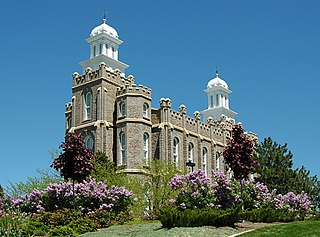
The Logan Utah Temple was completed in 1884, and is the fourth temple built by the Church of Jesus Christ of Latter-day Saints. Located in the city of Logan, Utah, it was the second temple built in the Rocky Mountains, after the St. George Temple, which remains the only Latter-day Saint temple that has been in operation longer than the Logan Temple.
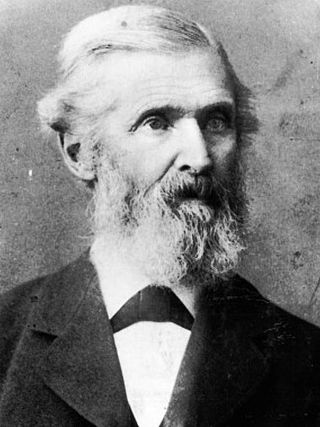
Truman Osborn Angell was an American architect who served many years as the official architect of the Church of Jesus Christ of Latter-day Saints. The brother-in-law of Brigham Young, he was a member of the vanguard company of Mormon pioneers that entered the Salt Lake Valley on July 24, 1847. He designed the Salt Lake Temple, the Lion House, the Beehive House, the Utah Territorial Statehouse, the St. George Utah Temple, and other public buildings. Angell's modifications to the Salt Lake Tabernacle are credited with perfecting the acoustics for which the building is famous.
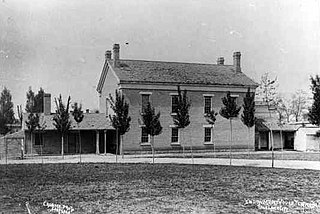
The Endowment House was an early building used by the Church of Jesus Christ of Latter-day Saints to administer temple ordinances in Salt Lake City, Utah Territory. From the construction of the Council House in 1852, Salt Lake City's first public building, until the construction of the Endowment House, the members of the LDS Church used the top floor of the Council House for administering temple ordinances. When this arrangement proved impractical, Brigham Young directed Truman O. Angell, architect of the Salt Lake Temple, to design a temporary temple. Completed in 1855, the building was dedicated by Heber C. Kimball and came to be called the Endowment House after the endowment ceremonies that were conducted inside it.
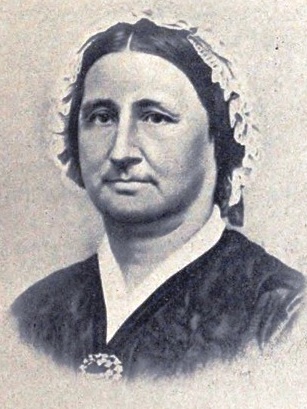
Mary Ann Angell Young was the second woman married to Brigham Young, who served as president of the Church of Jesus Christ of Latter-day Saints. Young's first wife had died in 1832, leaving Young a widower. Angell and Young were married on March 31, 1834, in Kirtland, Ohio. Angell eventually gave her consent to the practice of plural marriage after Young's marriage to Lucy Ann Decker, his first plural wife. Angell remained married to Young until his death in 1877, and together they had six children.

On December 27, 1832, two years after the organization of the Church of Christ, the movement's founder, Joseph Smith, stated he received a revelation that called upon church members to restore the practice of temple worship. The Latter Day Saints in Kirtland, Ohio were commanded to:
"Establish a house, even a house of prayer, a house of fasting, a house of faith, a house of learning, a house of glory, a house of order, a house of God."
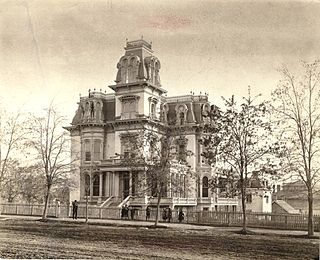
The Gardo House was the official residence of the president of the Church of Jesus Christ of Latter-day Saints during the tenures of John Taylor and Wilford Woodruff.

The Brigham Young Complex is a collection of buildings historically associated with the second President and leader of the LDS Church Brigham Young, on East South Temple in the center of Salt Lake City, Utah.

Florence Smith Jacobsen was an American religious leader associated with the Church of Jesus Christ of Latter-day Saints who served as the sixth General President of the Young Women's Mutual Improvement Association (YWMIA) from 1961 to 1972.
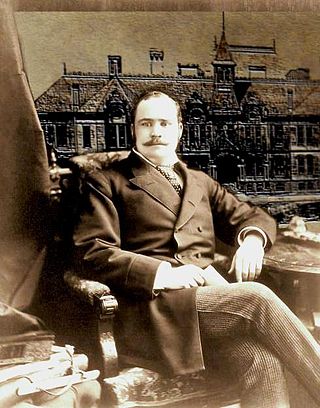
Joseph Don Carlos Young was an American architect and the Church Architect for the Church of Jesus Christ of Latter-day Saints from 1887 until 1893. In 1893, the office of Church Architect was dissolved, Young thereafter practiced privately with the LDS Church as a frequent client. Young practiced as an architect, landscape architect and designer from 1879 to circa 1935. A preponderance of his work centered on church commissions, or commissions offered him by extended Young family members, or higher echelon church friends.

The Mormon Pioneer Memorial Monument is a private cemetery and memorial. It is the burial site of Brigham Young and several other of his wives and children. Part of the property was dedicated to the Mormon pioneers who died making the journey to Utah from Illinois and other parts of the world between 1847 and 1869.

The Devereaux House in Salt Lake City, Utah, United States, also known as the Staines-Jennings Mansion, was built in 1857 for William Staines. It was designed by William Paul. The house was expanded by William Jennings, mayor of Salt Lake City from 1882 to 1885, again using Paul as the architect. Devereaux was a social center for the Salt Lake City area, hosting distinguished visitors. Brigham Young's son Joseph Angell Young owned the house for a short time.




















